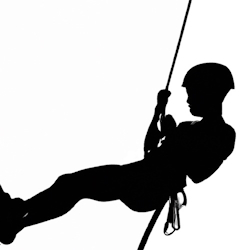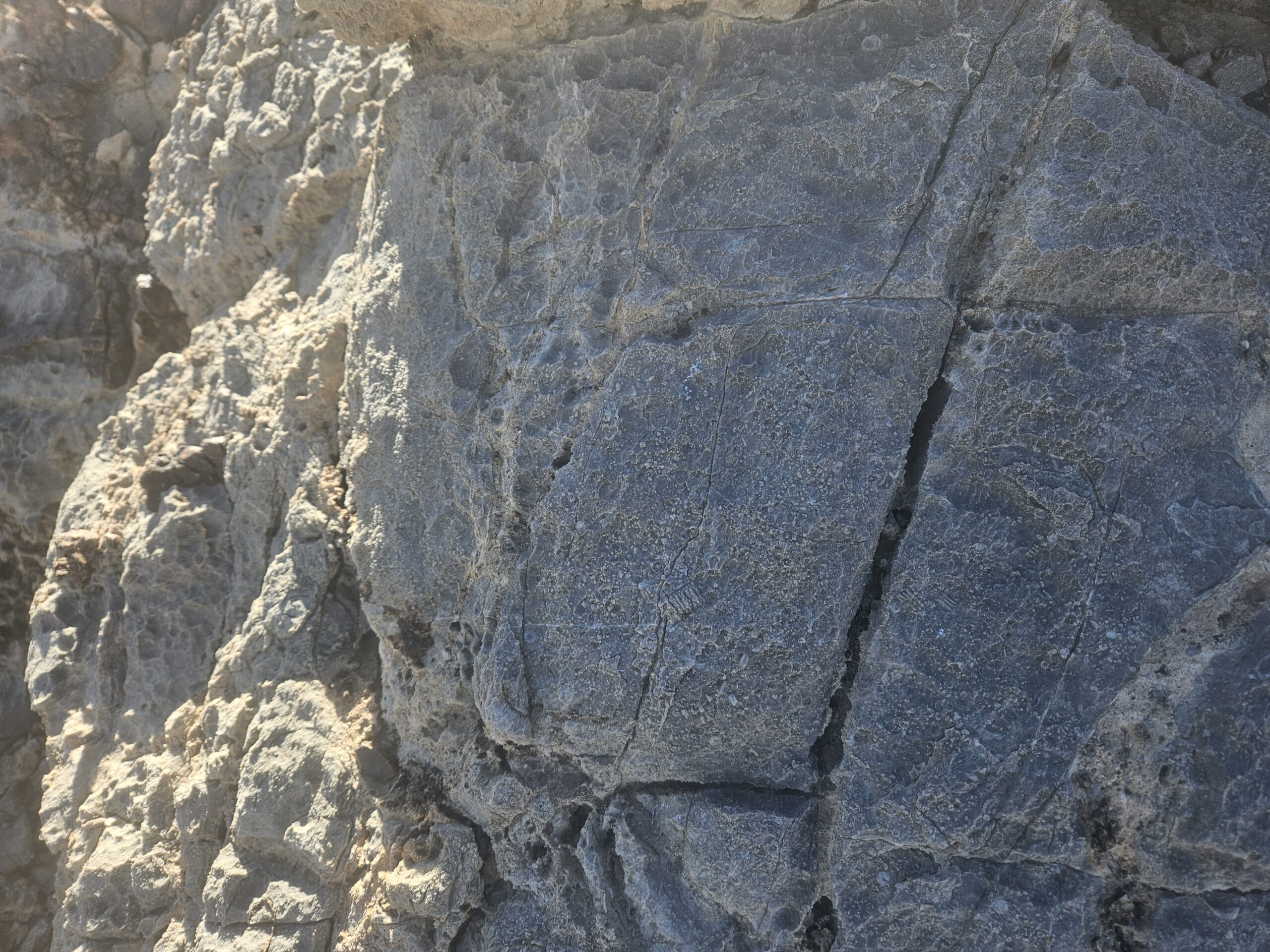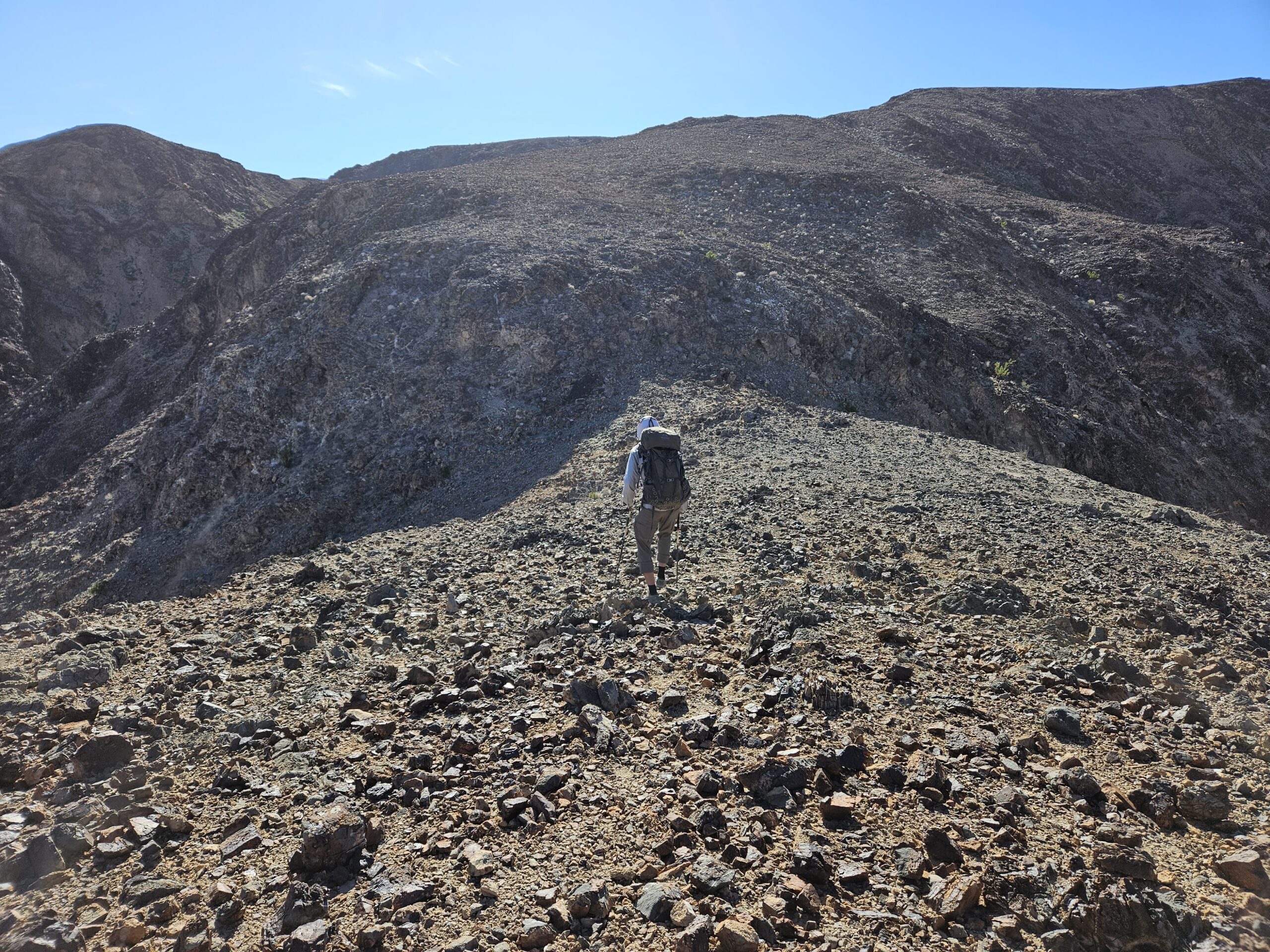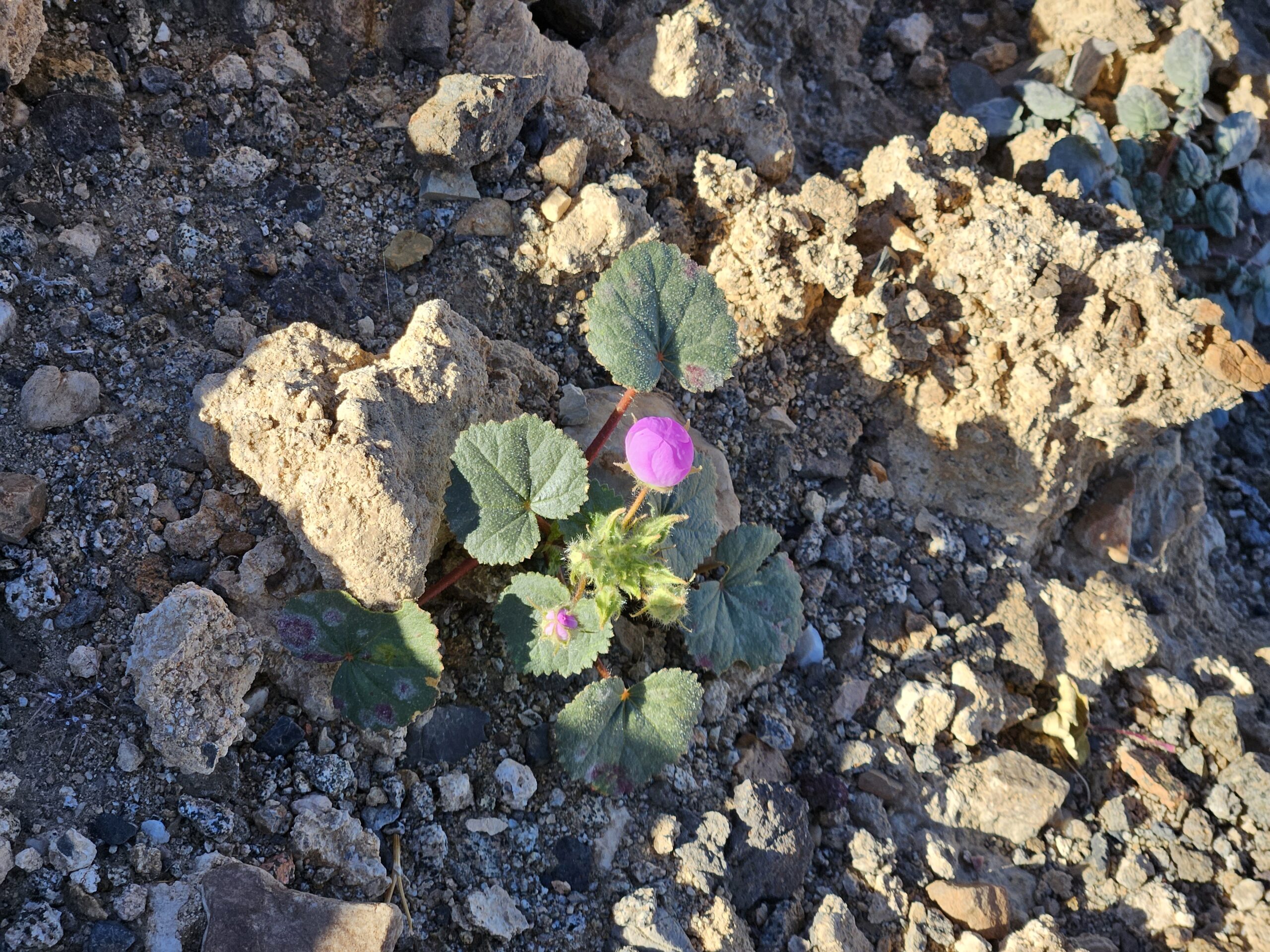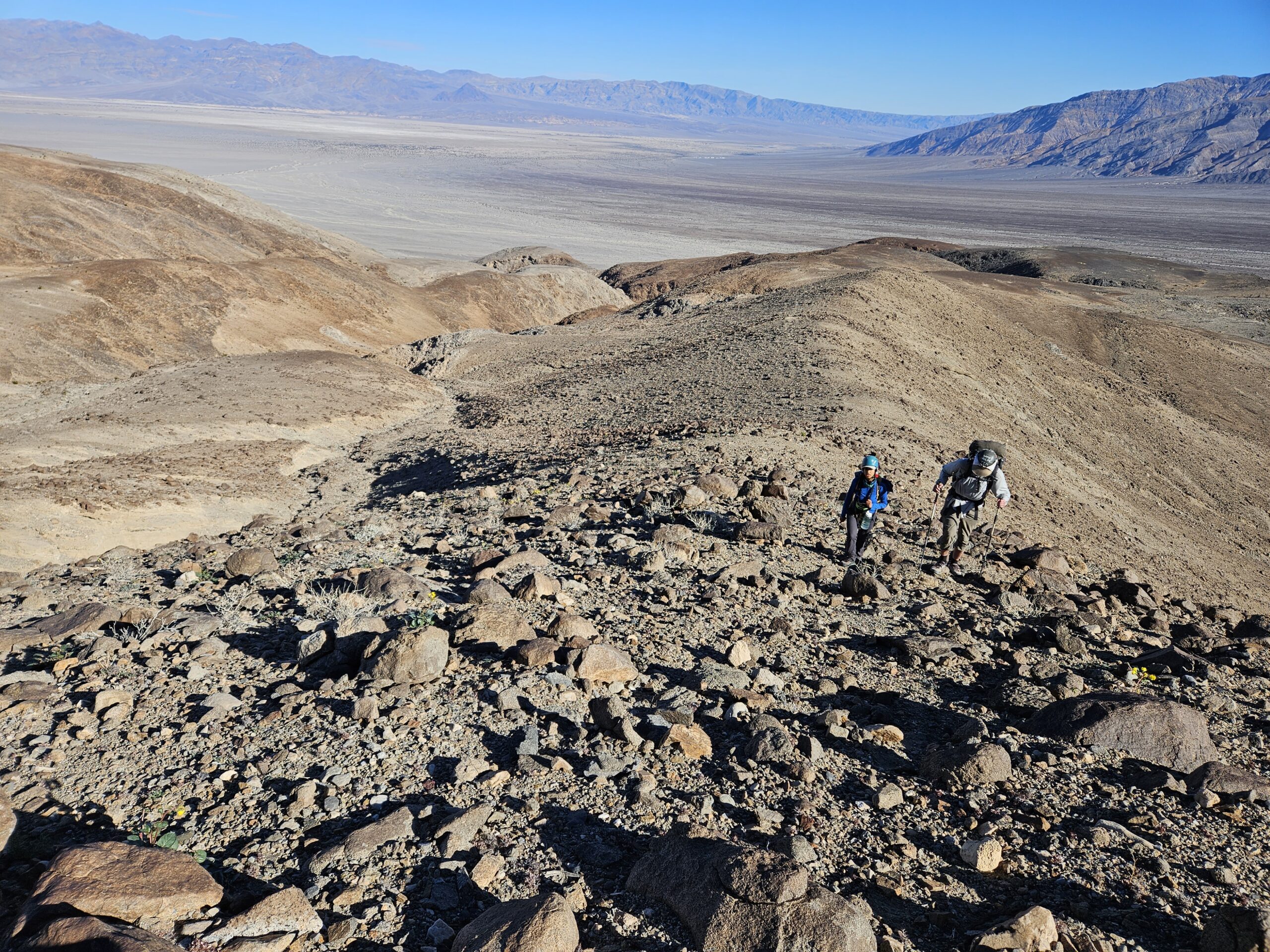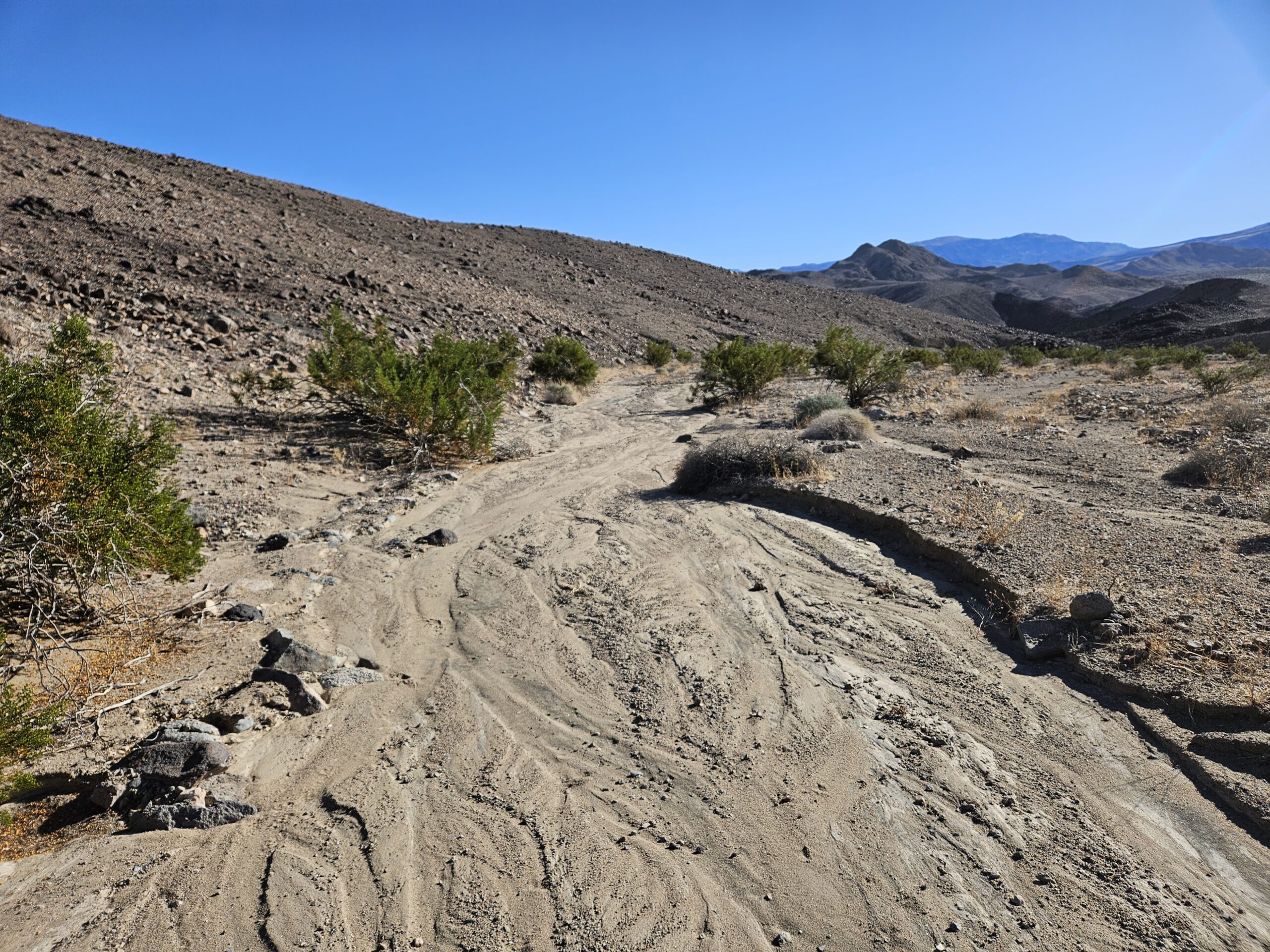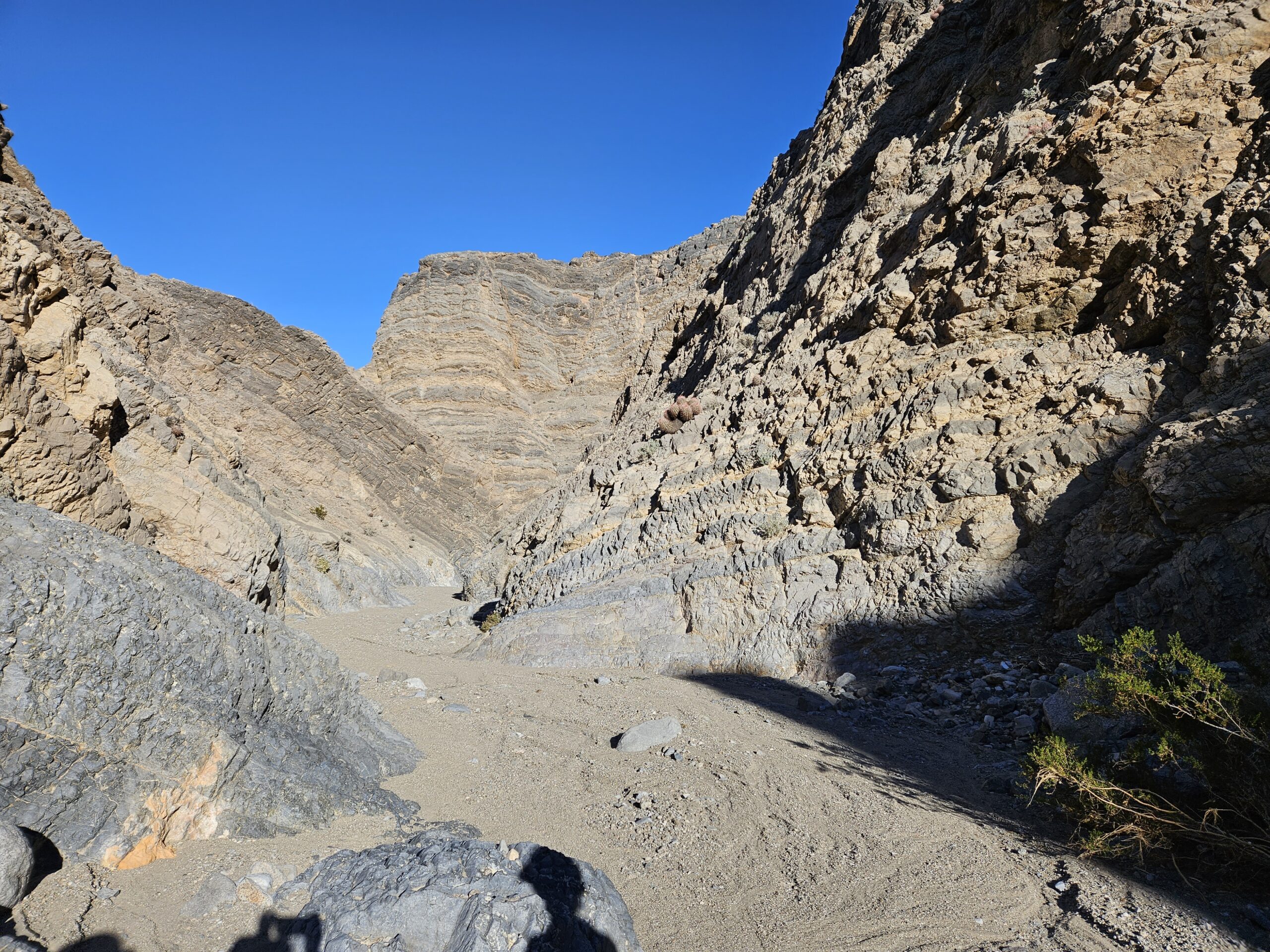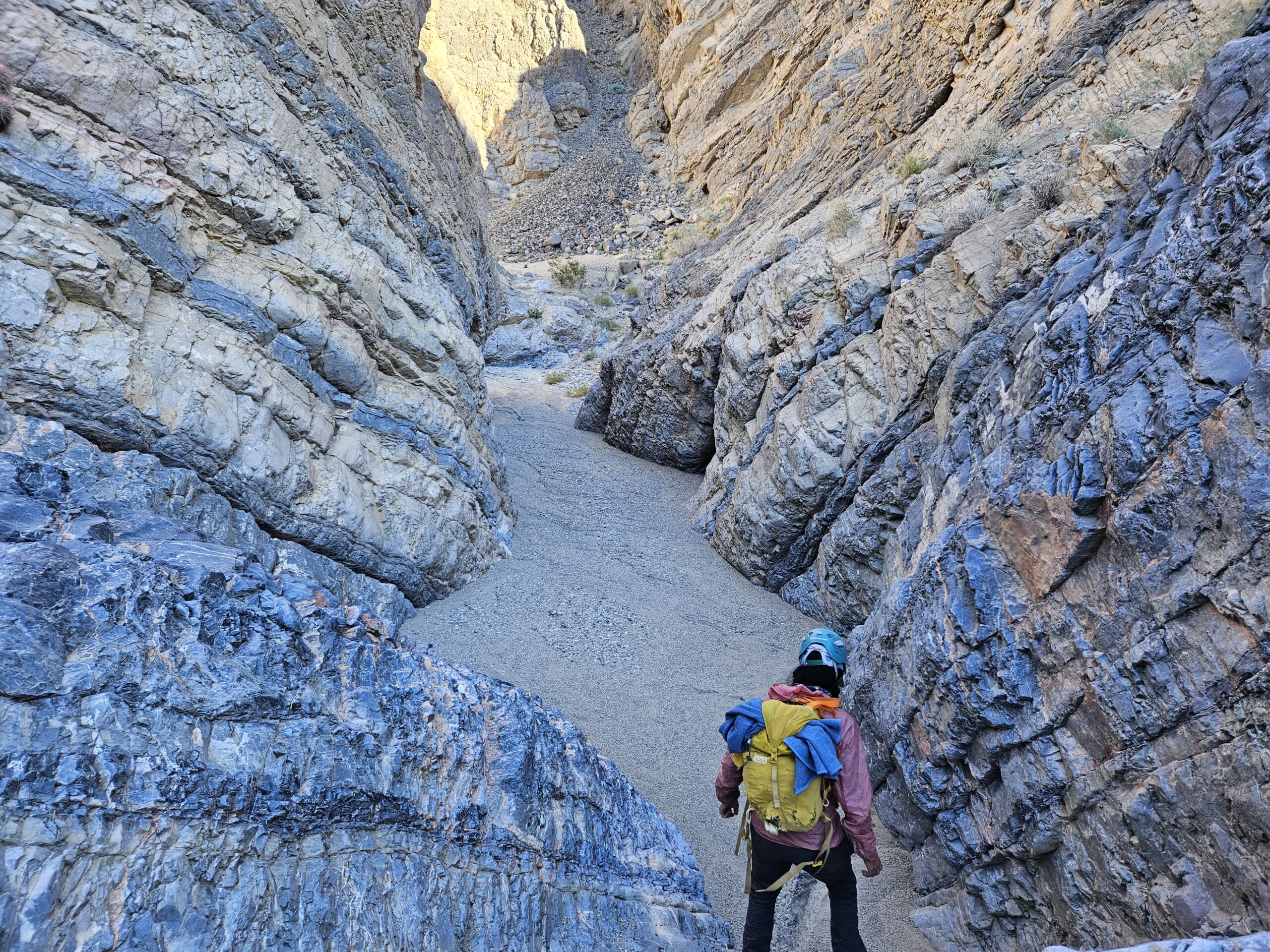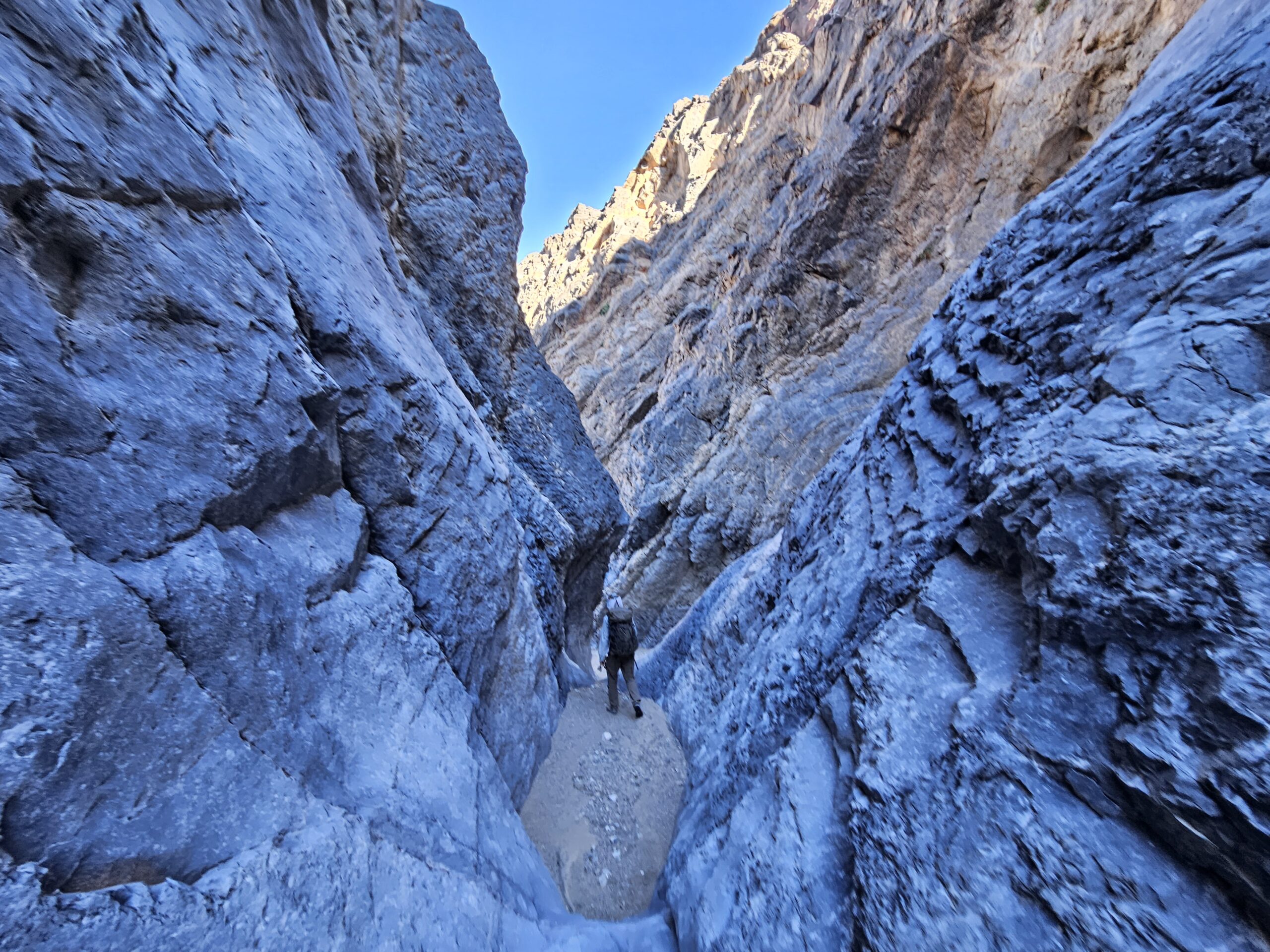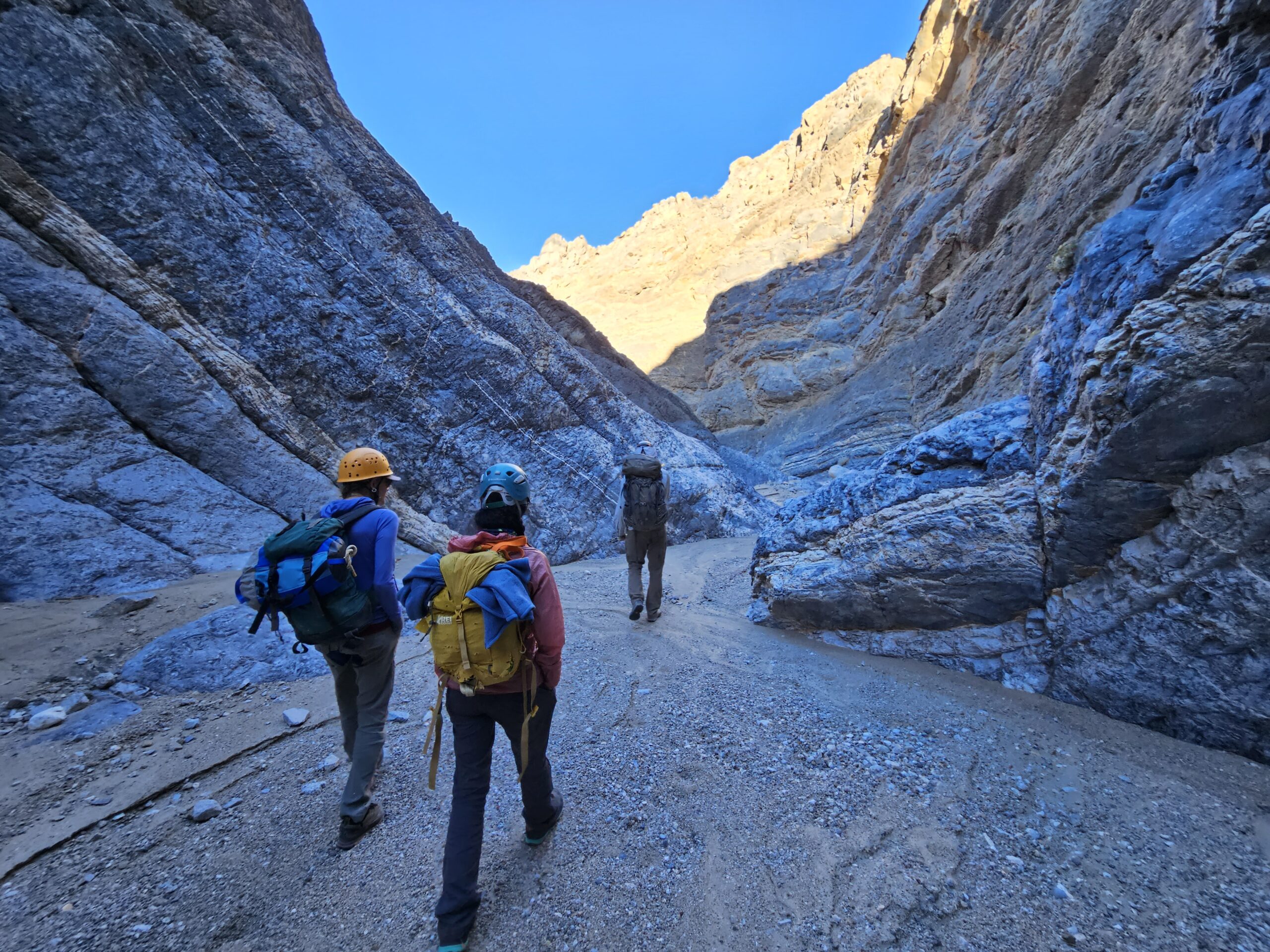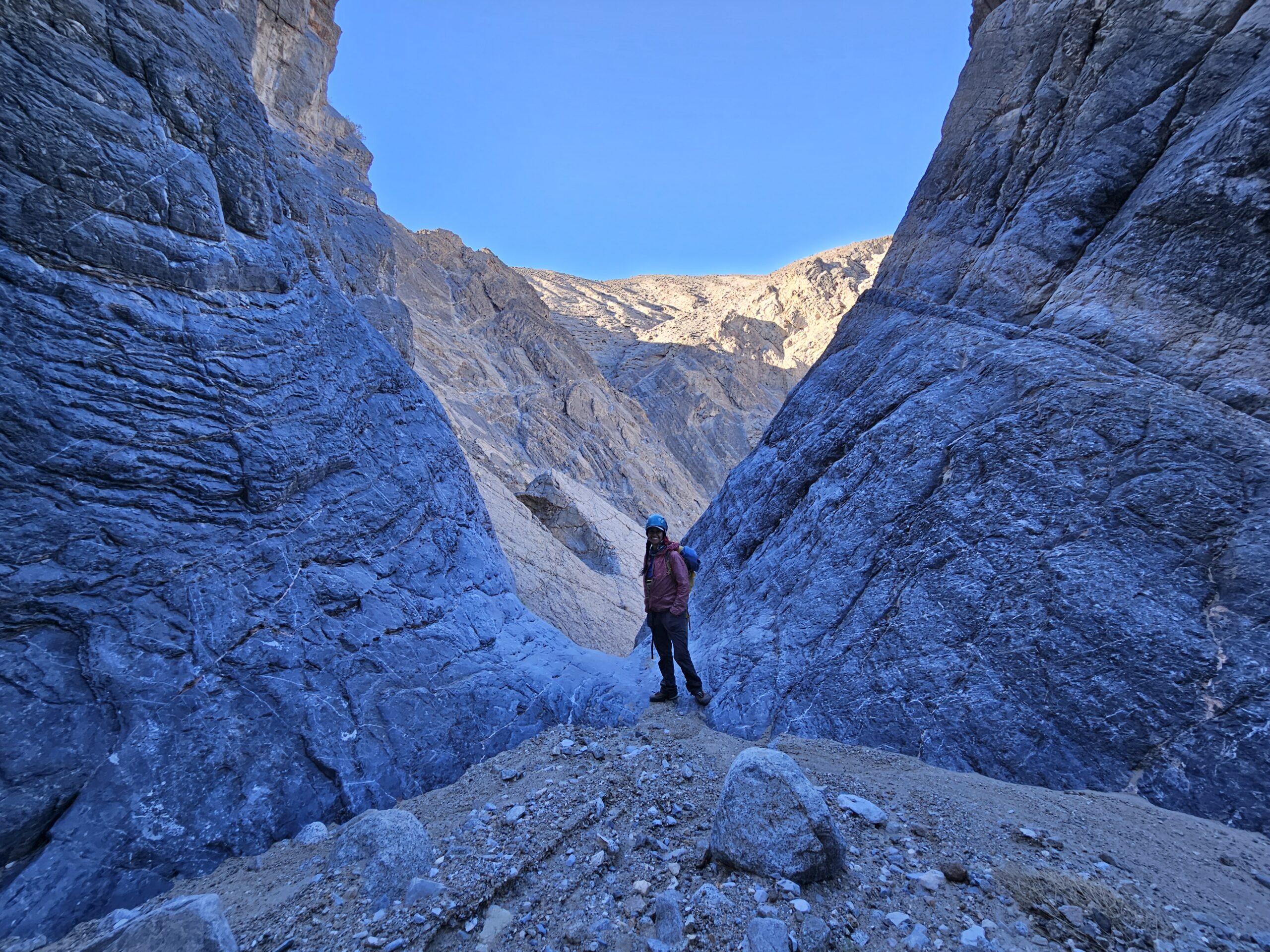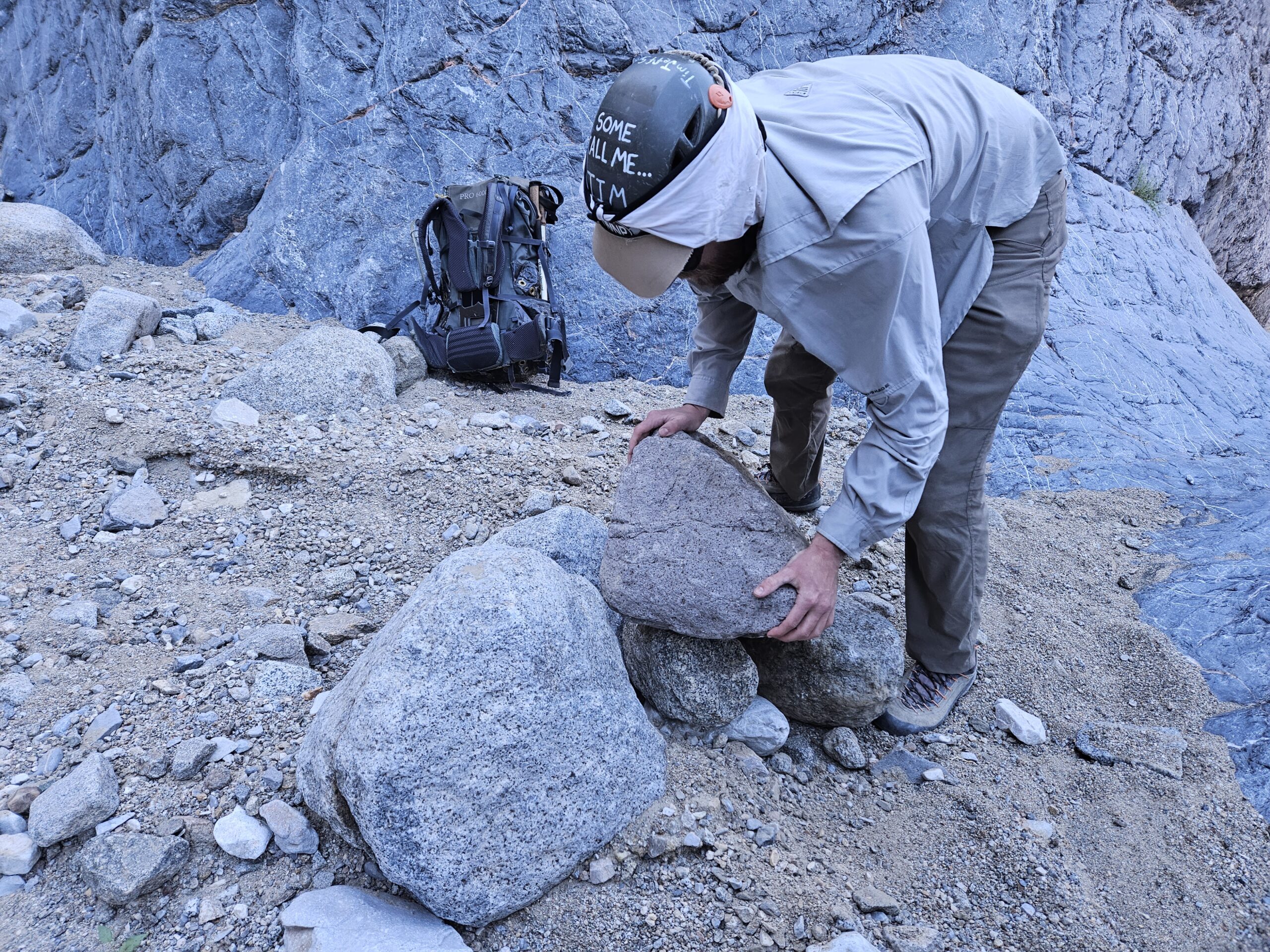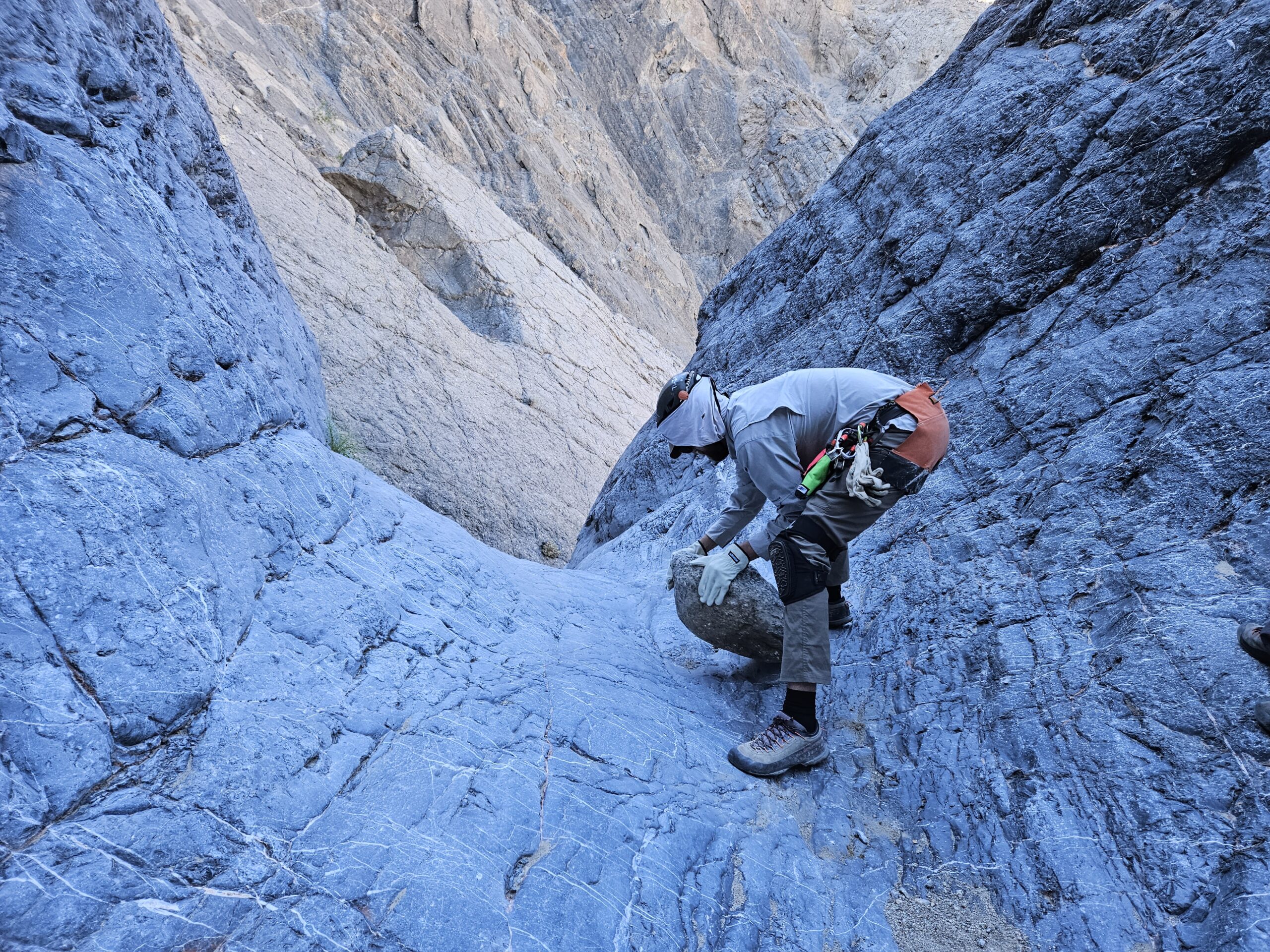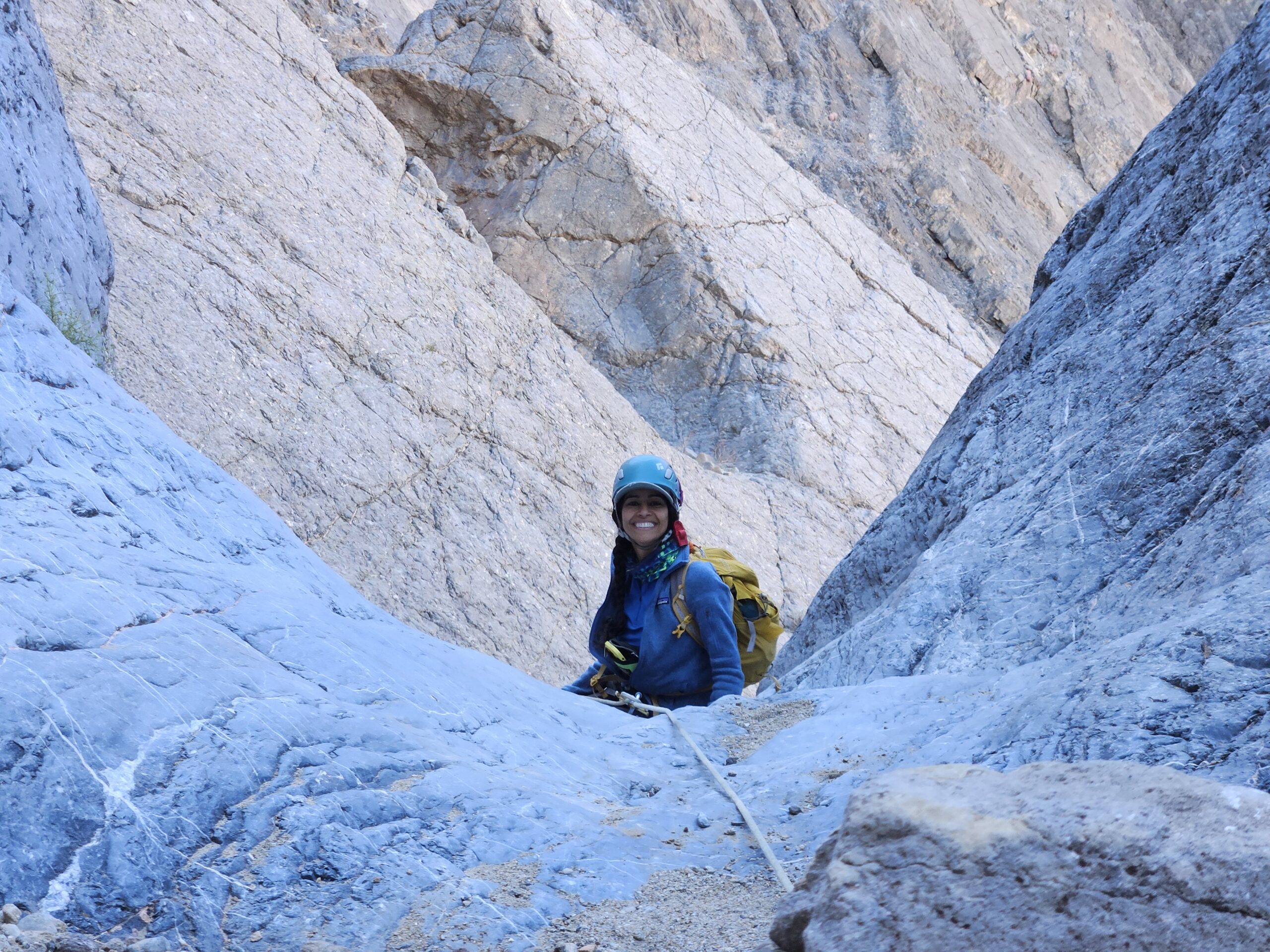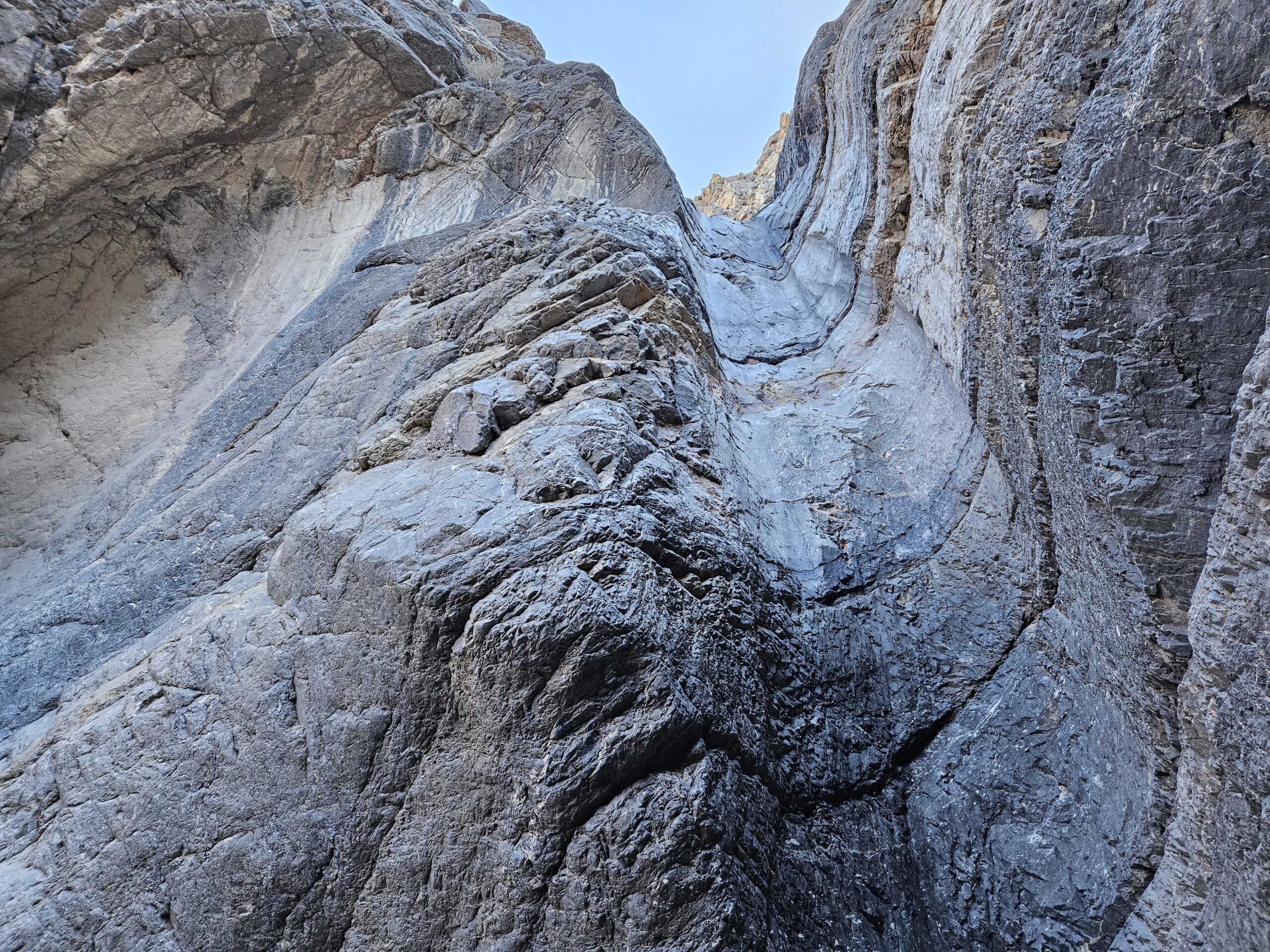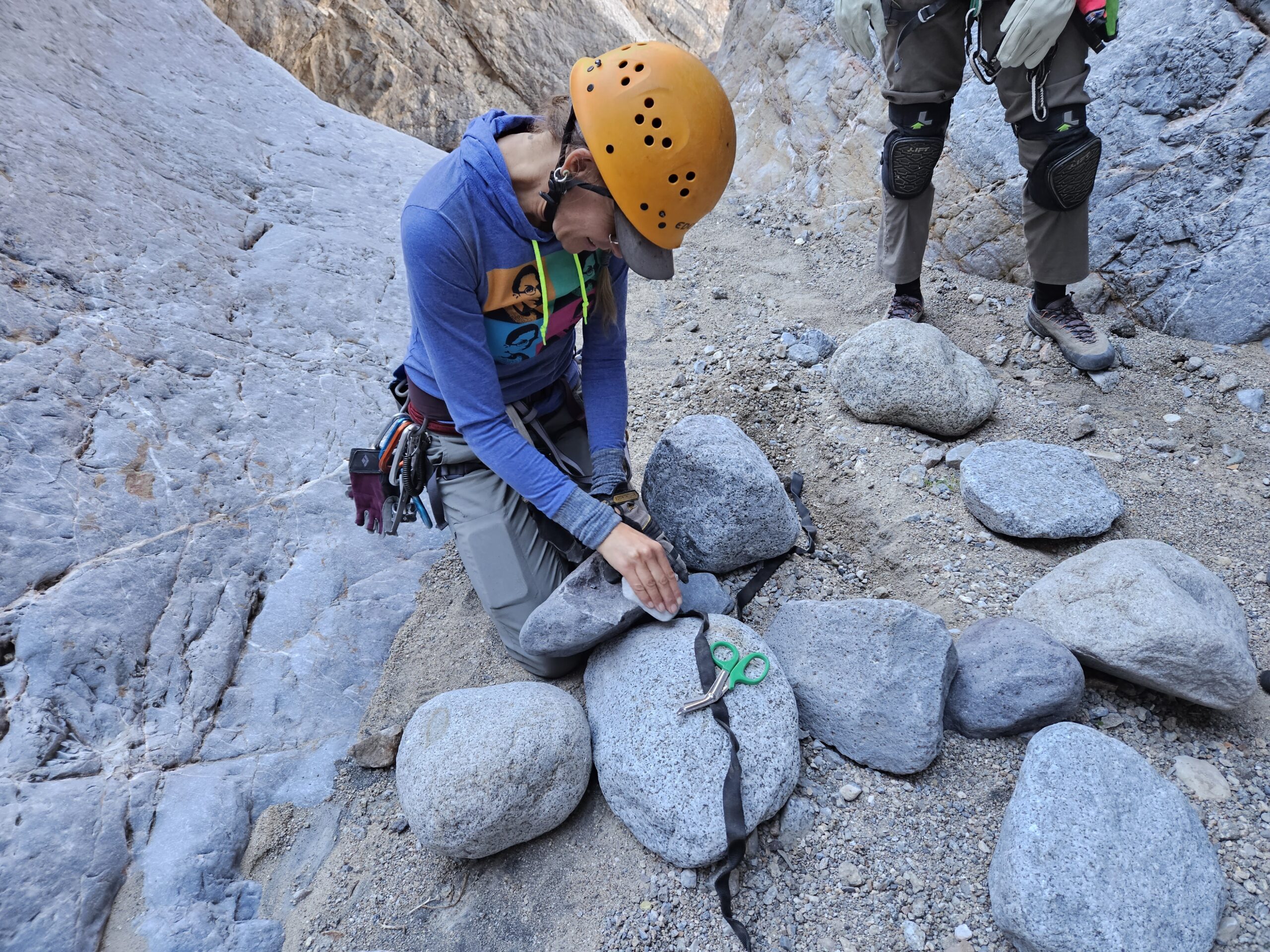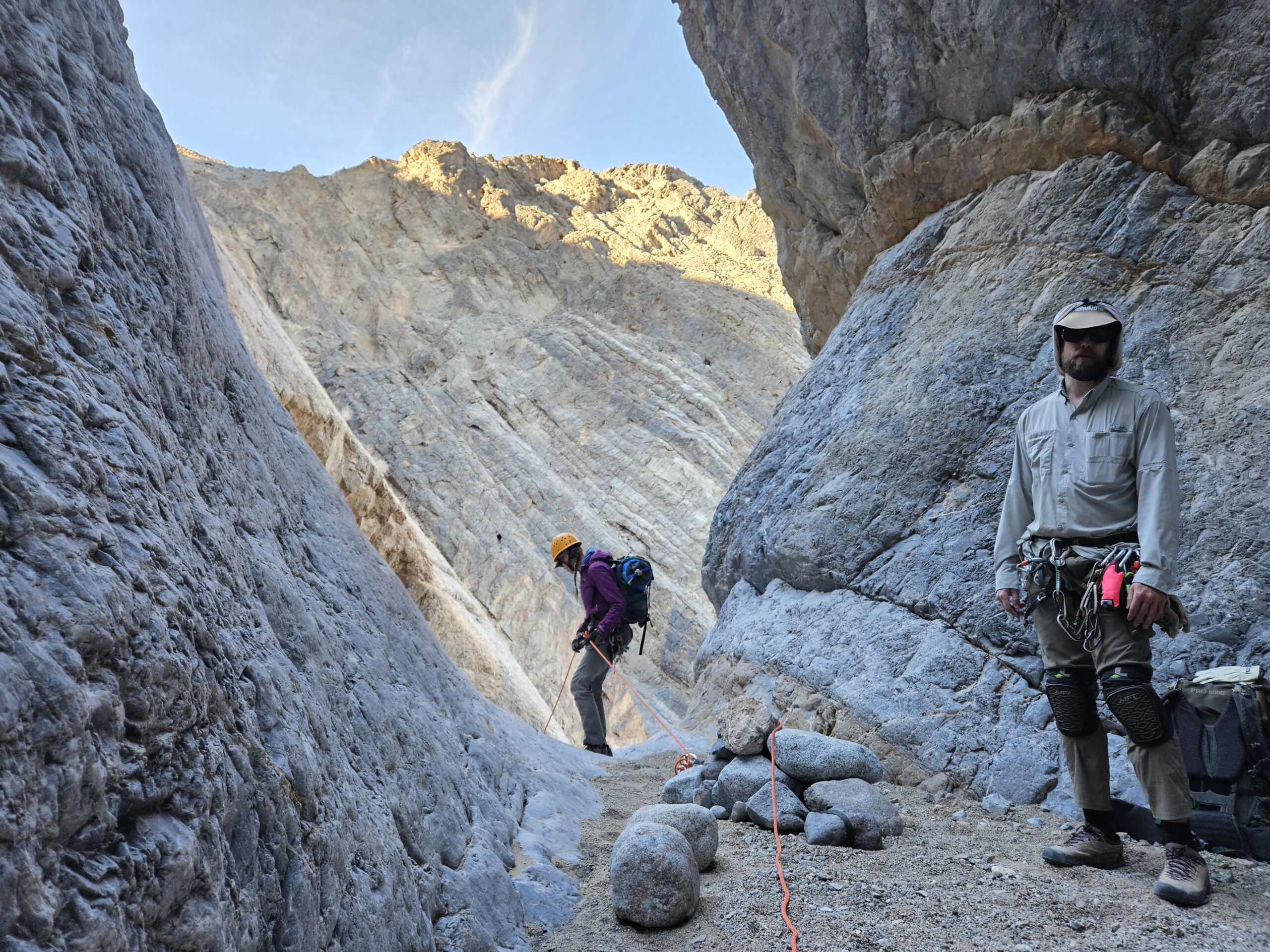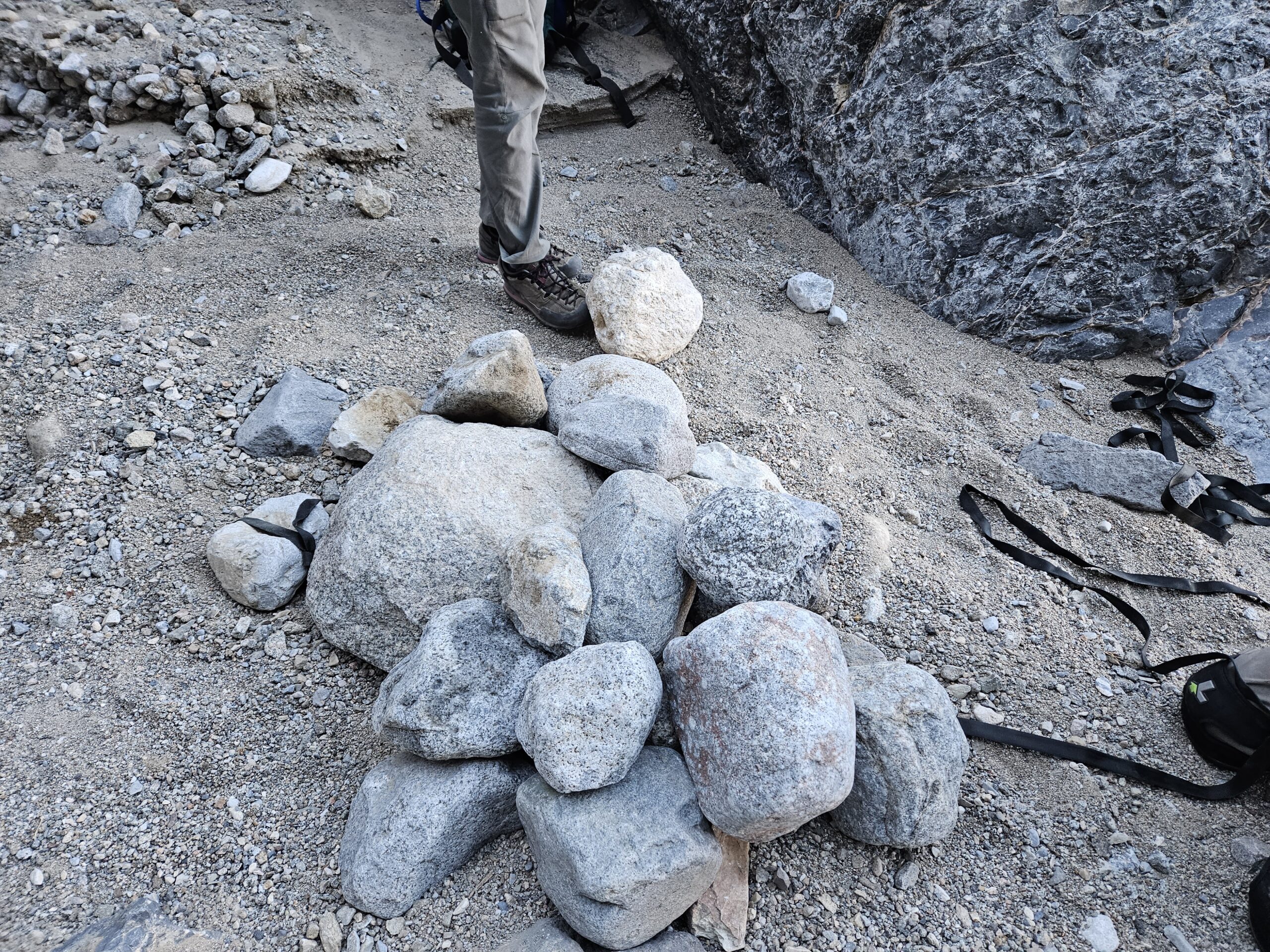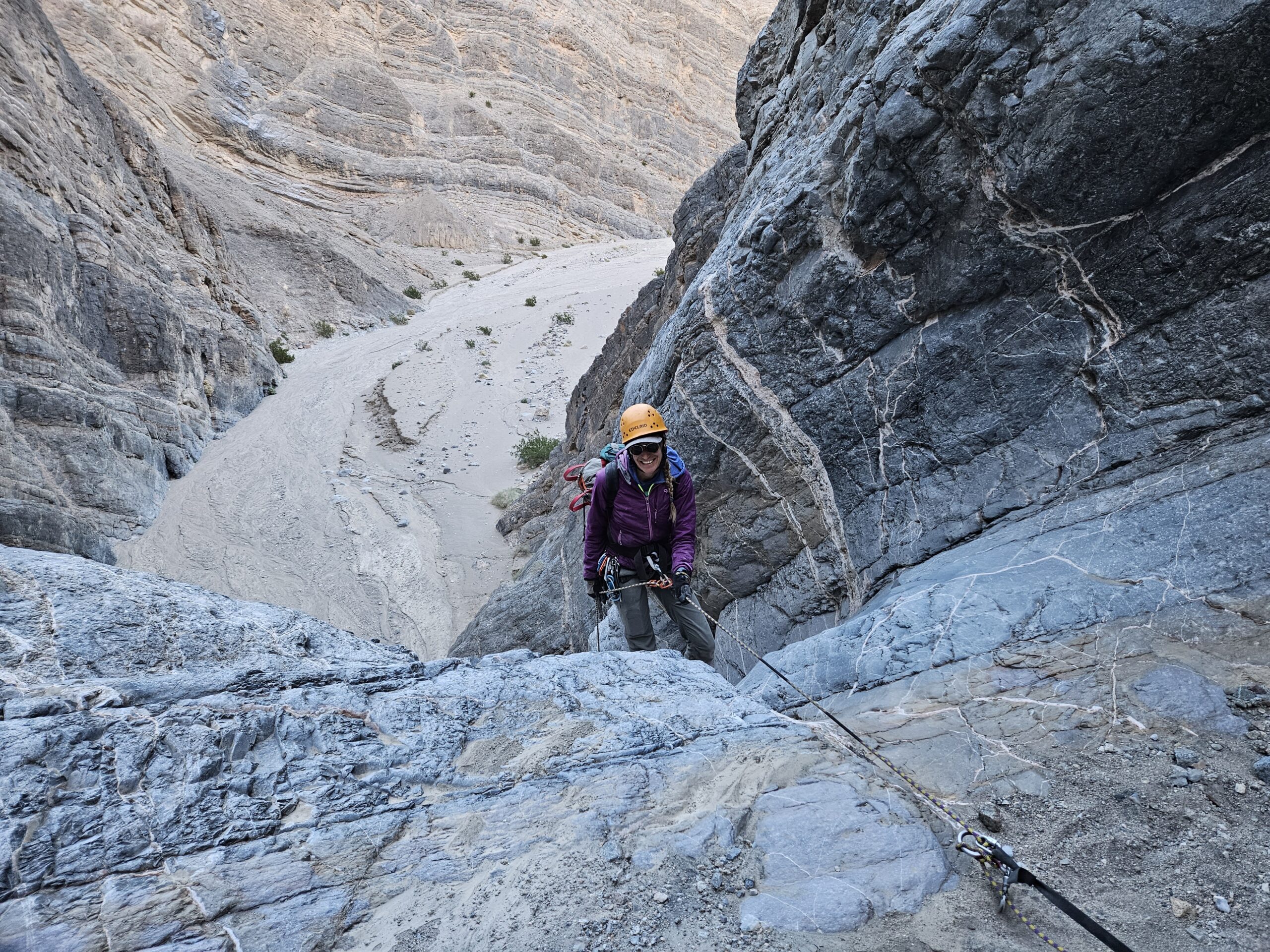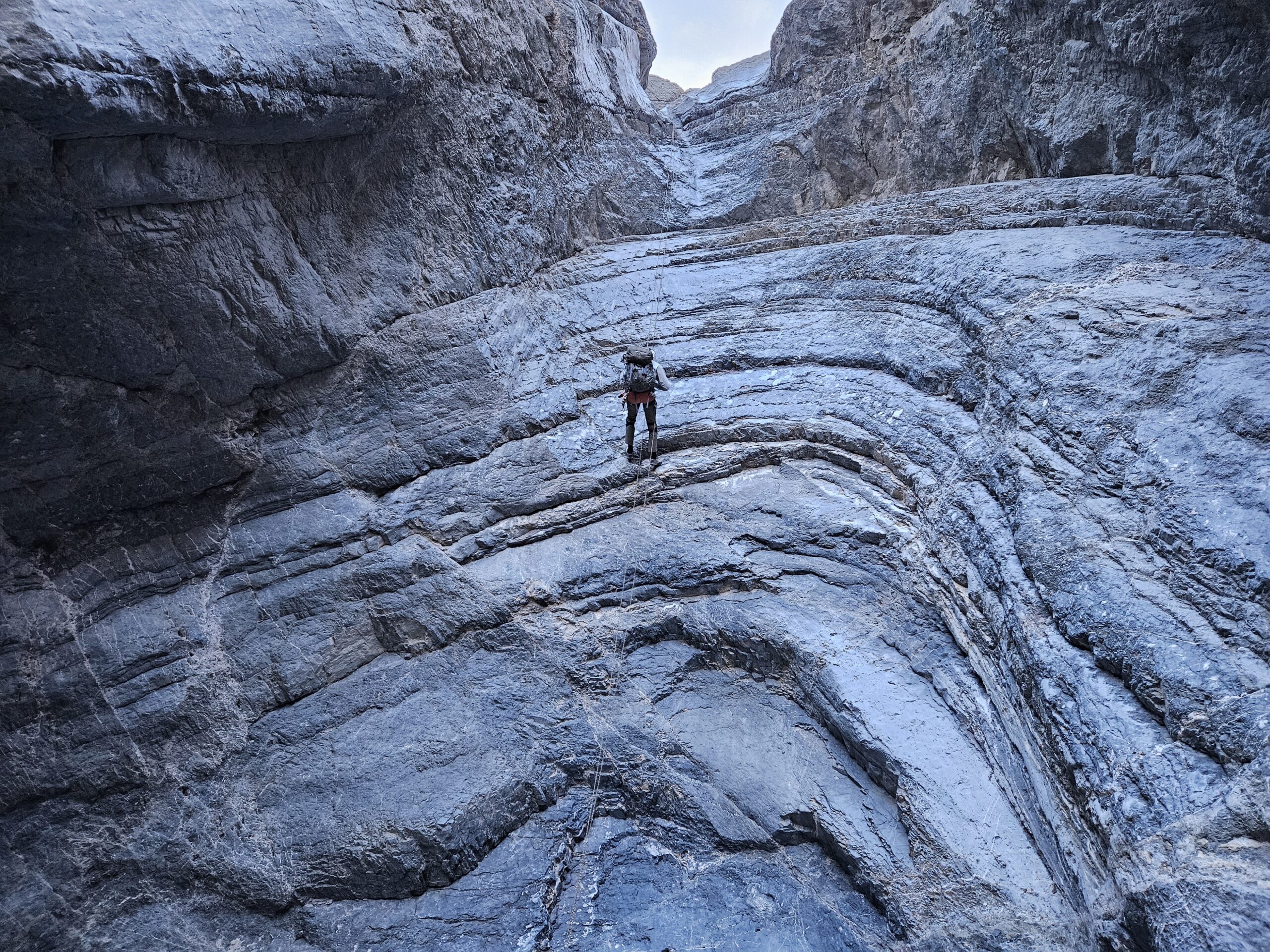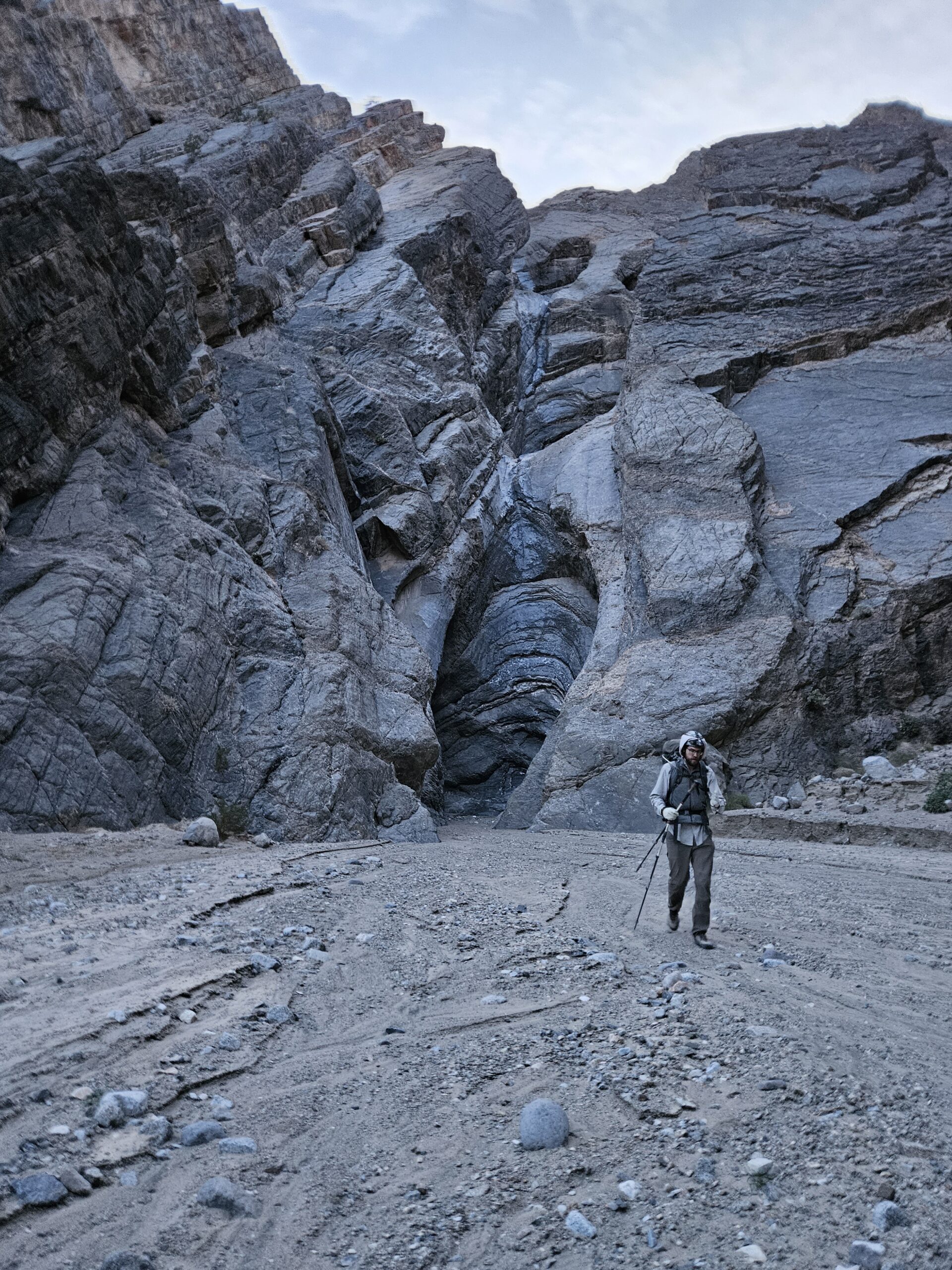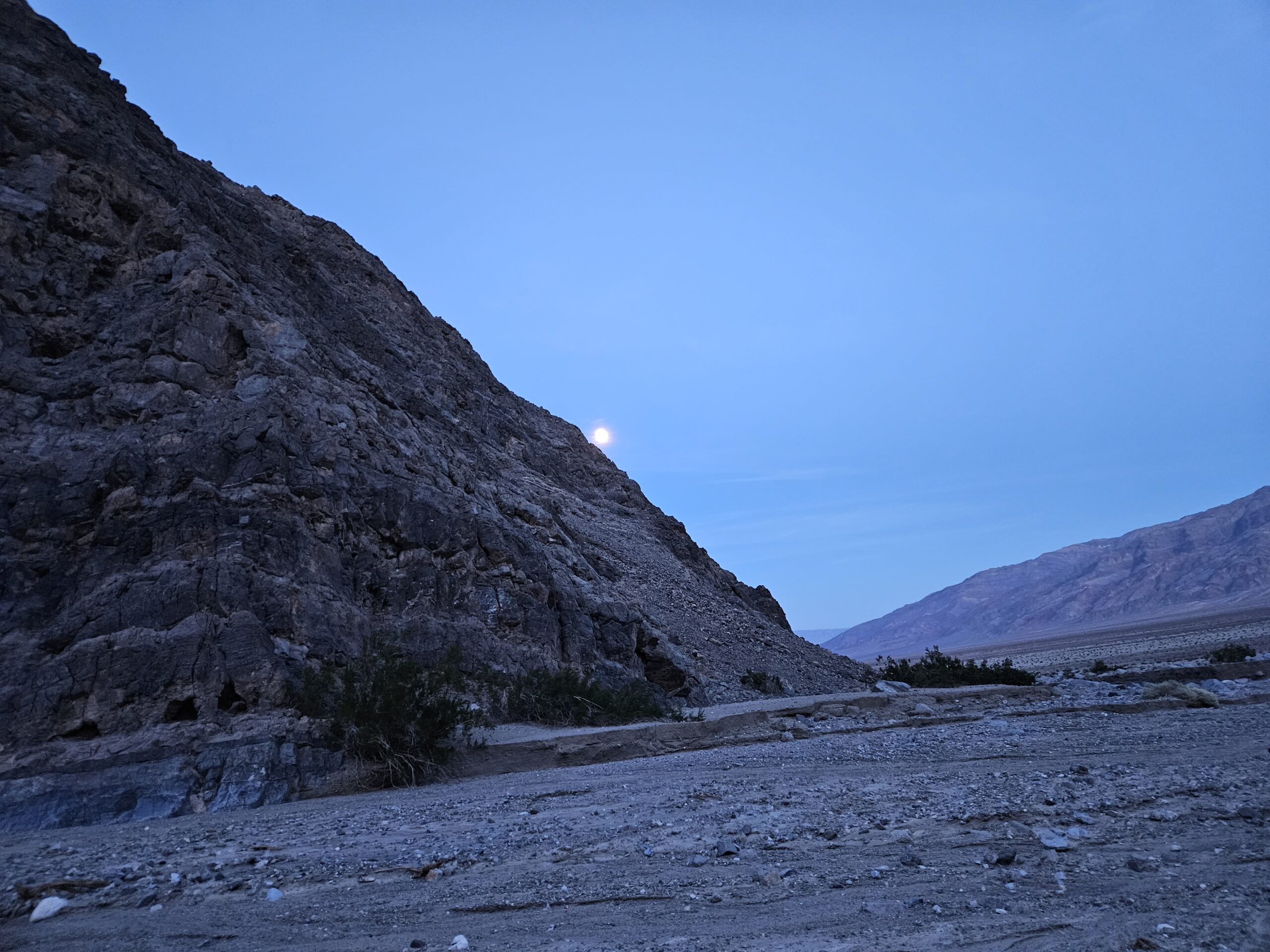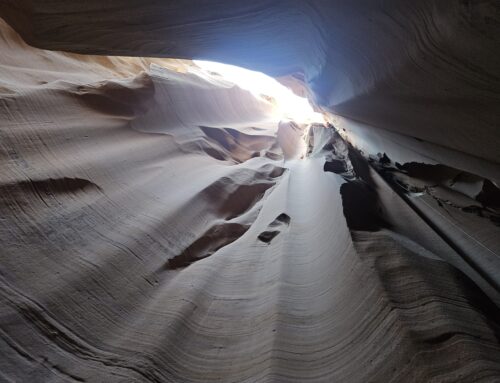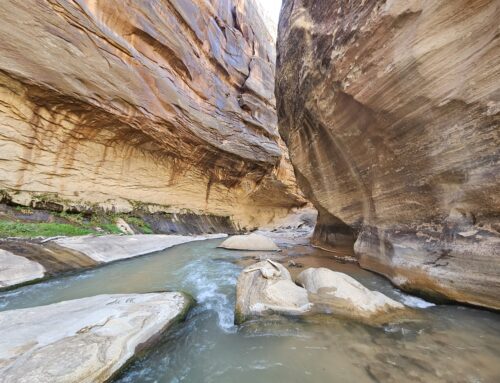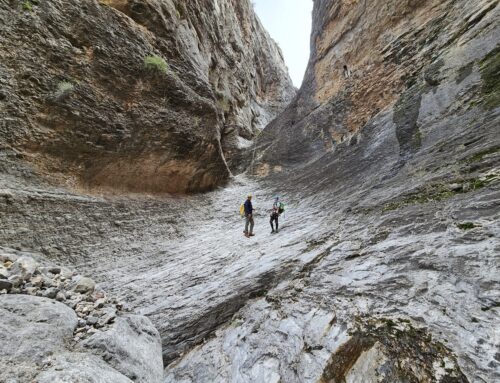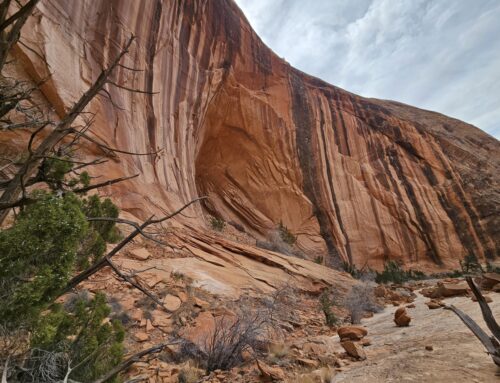It was Christmas Day 2023 and Max and I were in the middle of a three-day power outage in Death Valley, comfortable in a rented trailer that was running on propane. We had done Typhon 4 the day before and our quads were shot from the 6,000-foot elevation loss. The obvious plan would be to take it easy 😊. Cue the laugh track. Rick Kent had a first descent of a canyon that he wanted to do, with a steep 3,000-foot elevation gain approach, so Max and most of the rest of our crew thought that was a great plan for a rest day.
I decided that was a bit too much for my legs to take, so I joined a small group to explore Miracle Max Canyon, one of the lesser-visited canyons of the Princess Bride range. The Princess Bride range is a real outlier in the Death Valley naming convention. Here is a whole range of beautiful canyons not named after something horrible. Miracle Max does not require a permit aside from the park entrance fee. Beta can be found here: Canyoneering Miracle Max Canyon in Death Valley National Park, California (stavislost.com)
Miracle Max is a long drive down sandy roads and a very long hike in and out, for a very short but pretty canyon with only four rappels. The approach is very good by Death Valley standards, heading a couple miles up a wash to the base of a ridge in the Cottonwood Mountains. We then climbed the steep ridge, which had very solid footing, and proceeded to the top, where we could see some of the other Princess Bride canyons below us. We continued past the more popular canyons, walking up the ridge for a couple of miles, gaining about 2,000 feet total elevation until we were able to drop down into a sandy wash that was the head of Miracle Max canyon. Along the way, we took many breaks and Tim in our party regaled us with stories about his menagerie of pets.
It was getting rather late in the day and the sunset was creeping up on us, so we decided to get a move on. The broad wash eventually turns into a canyon with tall walls composed of striped diagonal bands, interspersed with polished, dark gray narrows. The striking rock bands made for a beautiful canyon experience. We soon came upon the first rappel, which was a beautiful polished gray chute with white quartz inclusions.
All the anchors had been washed away by hurricane Hilary in August 2023 and it was obvious that we were the first party through since that time. We were armed with a lot of webbing and the prior knowledge that we might have to farm some rocks for the second and third rappels. There were enough rocks at the top to rebuild the first anchor and we sent Leonie down to scout the situation at the second rappel. She reported back that we would need to drop rocks down to the second rappel. We then collected some large boulders and rolled them off the edge of the rappel. Tim looked like a giant flinging boulders around. Unlike our flimsy sandstone here in Utah, these rocks were made of sterner stuff and did not shatter on the way down.
We rebuilt the second anchor. Once down at the third rappel, Leonie reported that we could use a few more rocks, so we continued to drop rocks down to the next level. The second rappel landed us in a very interesting spot where the rock layers were curved like a rainbow, although not as colorful. It was a fascinating rock folding pattern. We then descended to the final level, where we could see a destroyed anchor near the edge, which we rebuilt. The last rappel was the most beautiful, going down the smooth gray rock face with the same semi-circular folds all the way down.
We got out of the canyon just as dusk was setting. We still had a long hike out of 4-5 miles down the same easy wash that we came in, and a full moon to light our way. Our total day was nine miles with 2,000 feet elevation gain, which I suppose can be considered a rest day in Death Valley.
